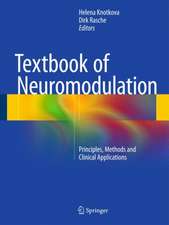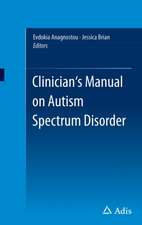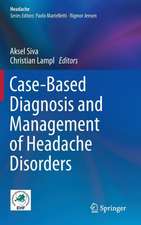Mechanisms of Cerebral Hypoxia and Stroke: Advances in Behavioral Biology, cartea 35
Editat de G. Somjenen Limba Engleză Paperback – 3 apr 2012
Din seria Advances in Behavioral Biology
- 5%
 Preț: 368.00 lei
Preț: 368.00 lei -
 Preț: 401.79 lei
Preț: 401.79 lei -
 Preț: 406.63 lei
Preț: 406.63 lei - 15%
 Preț: 649.54 lei
Preț: 649.54 lei -
 Preț: 387.20 lei
Preț: 387.20 lei -
 Preț: 405.28 lei
Preț: 405.28 lei -
 Preț: 381.43 lei
Preț: 381.43 lei - 5%
 Preț: 378.07 lei
Preț: 378.07 lei - 5%
 Preț: 372.76 lei
Preț: 372.76 lei - 5%
 Preț: 724.50 lei
Preț: 724.50 lei - 5%
 Preț: 668.50 lei
Preț: 668.50 lei - 5%
 Preț: 378.97 lei
Preț: 378.97 lei - 15%
 Preț: 672.62 lei
Preț: 672.62 lei -
 Preț: 385.08 lei
Preț: 385.08 lei - 15%
 Preț: 673.27 lei
Preț: 673.27 lei -
 Preț: 407.39 lei
Preț: 407.39 lei - 5%
 Preț: 713.75 lei
Preț: 713.75 lei - 5%
 Preț: 716.84 lei
Preț: 716.84 lei - 5%
 Preț: 372.59 lei
Preț: 372.59 lei - 15%
 Preț: 680.47 lei
Preț: 680.47 lei - 15%
 Preț: 687.19 lei
Preț: 687.19 lei - 15%
 Preț: 596.01 lei
Preț: 596.01 lei -
 Preț: 421.05 lei
Preț: 421.05 lei - 15%
 Preț: 661.65 lei
Preț: 661.65 lei - 15%
 Preț: 663.27 lei
Preț: 663.27 lei - 5%
 Preț: 402.17 lei
Preț: 402.17 lei - 5%
 Preț: 369.29 lei
Preț: 369.29 lei -
 Preț: 409.30 lei
Preț: 409.30 lei - 15%
 Preț: 660.18 lei
Preț: 660.18 lei -
 Preț: 386.00 lei
Preț: 386.00 lei - 15%
 Preț: 646.62 lei
Preț: 646.62 lei -
 Preț: 397.59 lei
Preț: 397.59 lei -
 Preț: 406.63 lei
Preț: 406.63 lei - 5%
 Preț: 756.15 lei
Preț: 756.15 lei - 5%
 Preț: 406.57 lei
Preț: 406.57 lei - 15%
 Preț: 638.11 lei
Preț: 638.11 lei - 5%
 Preț: 389.93 lei
Preț: 389.93 lei - 5%
 Preț: 392.13 lei
Preț: 392.13 lei - 5%
 Preț: 719.74 lei
Preț: 719.74 lei -
 Preț: 389.49 lei
Preț: 389.49 lei - 5%
 Preț: 2147.36 lei
Preț: 2147.36 lei - 5%
 Preț: 1424.68 lei
Preț: 1424.68 lei - 5%
 Preț: 1430.35 lei
Preț: 1430.35 lei - 5%
 Preț: 2124.15 lei
Preț: 2124.15 lei
Preț: 403.15 lei
Nou
Puncte Express: 605
Preț estimativ în valută:
77.15€ • 83.78$ • 64.81£
77.15€ • 83.78$ • 64.81£
Carte tipărită la comandă
Livrare economică 22 aprilie-06 mai
Preluare comenzi: 021 569.72.76
Specificații
ISBN-13: 9781468455649
ISBN-10: 1468455648
Pagini: 488
Ilustrații: XII, 474 p.
Dimensiuni: 170 x 244 x 26 mm
Greutate: 0.77 kg
Ediția:Softcover reprint of the original 1st ed. 1988
Editura: Springer Us
Colecția Springer
Seria Advances in Behavioral Biology
Locul publicării:New York, NY, United States
ISBN-10: 1468455648
Pagini: 488
Ilustrații: XII, 474 p.
Dimensiuni: 170 x 244 x 26 mm
Greutate: 0.77 kg
Ediția:Softcover reprint of the original 1st ed. 1988
Editura: Springer Us
Colecția Springer
Seria Advances in Behavioral Biology
Locul publicării:New York, NY, United States
Public țintă
ResearchCuprins
Adaptation in Diving Vertebrates.- Inborn resistance to hypoxia and the O2-dependence of metabolism.- Brain vulnerability and survival during anoxia: protective strategies of hypoxia-resistant vertebrates.- General Pathology.- Early and late neuronal damage following cerebral ischemia.- Selective neuronal cell death after transient forebrain ischemia in the mongolian gerbil.- Possible implications of ischemic damage to dentate hilar somatostatin neurons in the rat.- Regulation of glutamate receptors in hippocampus after cerebral ischemia.- Role of edema in the pathophysiology of ischemic injury.- Acidosis-related brain damage immediate and delayed events.- Pathology of ischaemic brain damage: implications for therapy.- Ischemic damage of rat hippocampus and basal ganglia: light microscopical and biochemical changes.- Pathophysiology.- Physiological aspects of brain ischaemia in the experimental primate and man.- The dependency of cerebral ischemic damage on duration and severity of ischemia: studies of single cell activity and multimodality evoked responses.- Microcirculation and metabolism in reversible and irreversible cerebral ischemia.- Cerebral blood flow and its responsiveness to CO2 after traumatic and ischemic brain injuries.- The correlation between electrophysiological parameters (EEG, DC potential and tissue available O2) and regional metabolites (pH, ATP, glucose, NADH, K) after 45 min middle cerebral artery occlusion and 3 hours recirculation in cats.- Cerebral hypoxia during repetitive seizures.- Microcirculation, NAD/NADH fluorescence, extracellular potassium and glucose metabolism changes in focal cerebral ischemia.- Neurons, glia and ions in hypoxia, hypercapnia and acidosis.- Effects of anoxia on nerve cell function.- Reversible synaptic blockade caused by hypoxia of moderate degree in hippocampal tissue slices.- Anoxia reversibly inactivates hippocampal calcium currents.- Reversibility of neuronal function of hippocampal slice during deprivation of oxygen and/or glucose.- The effect of hypoxia on hippocampal neurones and its prevention by Ca2+-antagonists.- Anoxia in CA1 pyramidal cells: ionic and metabolic factors contributing to recovery of ion transport and synaptic transmission.- Long-term inhibition of synaptic transmission and macromolecular synthesis following anoxia in the rat hippocampal slice: interaction between Ca2+ and NMDA receptors.- Early alterations in striatal and hippocampal impedance and extracellular amino acids by cardiac arrest in freely moving rats.- Susceptibility to spreading depression and anoxia: regional differences and drug control.- Blood flow and metabolism in cortical spreading depression.- Dynamics of volatile buffers in brain cells during spreading depression.- The role of spreading depression-like hypoxic depolarization in irreversible neuron damage, and its prevention.- NMDA antagonists inhibit cortical spreading depression, but accelerate the onset of neuronal depolarization induced by asphyxia.- Does Leao’s spreading depression cause irreversible brain damage?.- Electrophysiological and biochemical events in the isolated perfused rat brain under ischemia and reperfusion.- Neurotransmitter modulation of neuronal damage following cerebral ischemia: Effects on protein ubiquitination.- Detection of free radicals in cerebral tissue and their relation to cerebral hypoxia/ischemia.- Pharmacology.- The limits of reversibility from ischemic cerebral insult and our method of prolonging cerebral survival.- Excitatory amino acid neurotransmission and protection against ischaemic brain damage.- Excitatory amino acid and purinergic transmitter involvement in ischemia-induced selective neuronal death.- Protection of hippocampal neurons from “ischemic” insult in vitro by acidic amino acid antagonists.- Magnesium inhibits ischemia-induced calcium accumulation in hilar neurones: possible effect of NMDA-receptor.- Dopamine and the susceptibility of striatal neurons to ischemia.- Effects of flunarizine on normal and injured rat cerebral cortex.- Improvement of postischemic cell damage and energy metabolism in the rat by flunarizine and emopamil.- Discrimination between vascular and direct effects on cerebral parenchyma of emopamil.- Prophylaxis and therapy of hypoxic and ischemic brain: effects of monosialoganglioside GM1.- Adenosine neuromodulation of selectively vulnerable CA1 neurons.- The nucleoside-transport inhibitor, mioflazine, increases recovery of hippocampal synaptic transmission and energy-rich metabolites after normothermic global ischemia.- Glutamine protects neuronal function against hypoxia in vitro.- Cerebroprotective effect of histamine receptor blockers in hypoxia-induced experimental brain edema.- Drug effects on cerebral extracellular ionic derangement during ischemic hypoxia.- Discussion and Conclusions.- General discussion: a synopsis.- Basic mechanisms in cerebral hypoxia and stroke: background, review and conclusions.- Author index.













